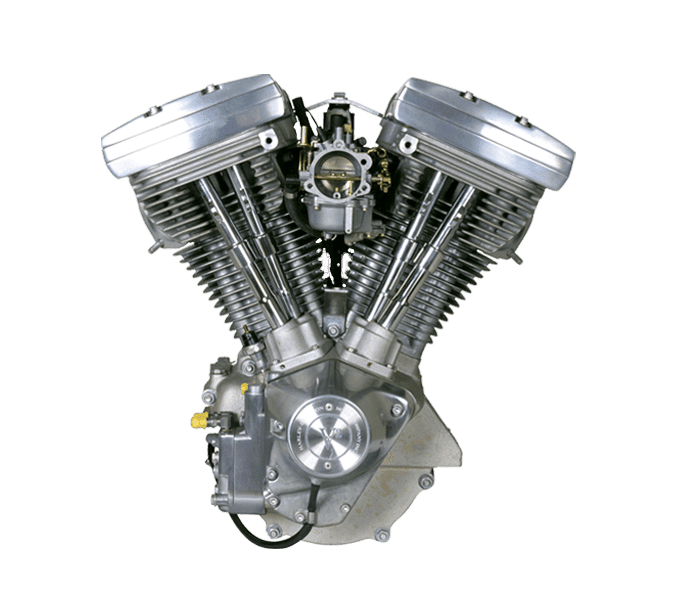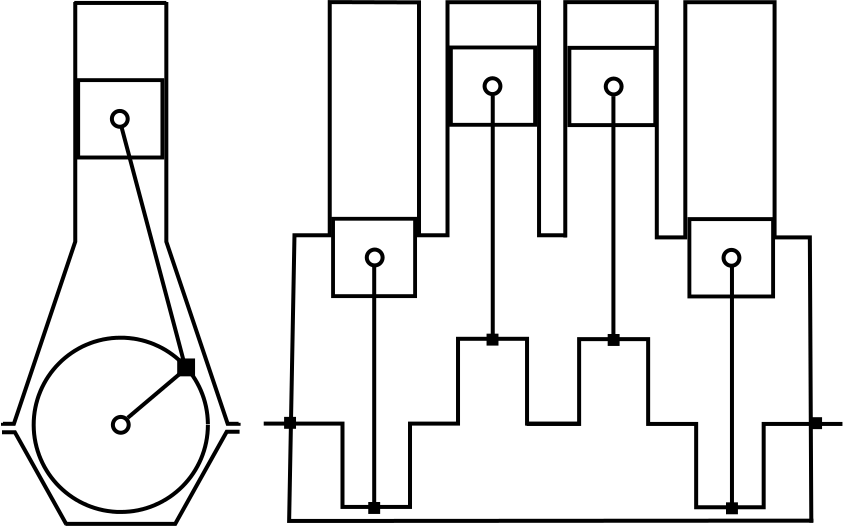Difference between a V engine and an Inline engine:
The Difference between V engine and Inline engine ae as follows:
V engine has its cylinders arranged in a “V” shape, whereas an inline engine has all of its cylinders placed in a single row.
Inline engines are those where the cylinder arrangement consists of all the cylinders being placed in line with each other, as opposed to Major engine configurations such as the “V” engine and the “I” engine.
A V engine is laid out with two banks of cylinders, angled inwards towards the center of the vehicle.
V Engine
An inline engine is a straight-four or straight-6 engine, in which all the cylinders are arranged in a line from front to rear.
Weight: A V engine is often heavier than an inline engine, because of the extra metal used in the banks of cylinders.
Balance: A V engine is more balanced than an inline engine because the weight of the cylinders is spread out over two banks. This means that a V engine can be turned on its side without affecting its balance. An inline engine would become unbalanced if turned on its side.
Noise: A V engine tends to be noisier than an inline engine because the banks of cylinders create more vibration.
Performance: Generally, a V engine is more powerful than an inline engine. This is because the V engine can generate more torque from the two banks of cylinders.
V engines tend to be considered more powerful and fuel-efficient, as they allow for more air intake. Inline engines are more common as they are less expensive to make.
V engine is more complex to build and maintain than an inline engine.
V engine has a central crankshaft with its crank throws spaced at 90 degrees and with an even number of crankpins connected to it, where each bank of cylinders has two connecting rods. The banks are set at an angle (usually 45 degrees) to the central crankshaft so that the pistons in each bank move inwards towards the center of the engine.
A V engine is heavier than an inline engine and takes up more space because of its two banks of angled cylinders.
V engines are less likely to vibrate.
The inline engine has fewer frictional losses between the cylinders and the pistons.
The cooling system does not have to work as hard because the engine has fewer hot spots in the V engine. However, since inline engines are very long, it can be difficult to fit enough air between them which makes an efficient cooling system essential.
This configuration of the V engine allows the engine to be shorter than an equivalent inline engine.
In an inline engine, the camshaft is positioned horizontally and in line with the rest of the cylinders. On a V-engine, the camshaft is positioned at a 180-degree angle and perpendicular to all cylinders on either side.
The most notable difference is that the V engine has twice as many power strokes per revolution as the inline-4 cylinder engine. This means that, for example, whereas gasoline engines with 4 or more cylinders need two complete revolutions of the crankshaft to generate one power stroke (crank angle of 180 degrees), an inline cylinder pulls one combustion event per crank angle of 60 degrees.
Although inline does not expressly lead to a greater power or fuel efficiency than a V-setup, it is cheaper because it’s simpler, can span larger capacity ranges with fewer parts, and lends itself better to mass production.
There are many mechanical differences, with one clear difference being that inline engines have a crankshaft running from front to back along the bottom center of the engine. In contrast, V engines have a crankshaft that runs from side to side in the upper part of the engine. “Inline” refers solely to how an engine’s cylinders are arranged in two rows going from front to back on either side of a row of pistons.
A V-engine is positioned in front of the drive axle and makes it possible to mount the engine lower and give a better weight distribution.
V-type engines transfer power laterally which generates significant forces and vibrations through lateral movement, affecting the overall performance and fuel efficiency when compared with an inline or radial design motor.
However, since inline engines are very long their main disadvantage is that they can give worse ground clearance compared to V engines especially
An inline engine is more popular than a V engine because it is easier to cool, has less frictional losses between the cylinders and the pistons, and is a compact yet high power-to-weight ratio.
Inline Engine




